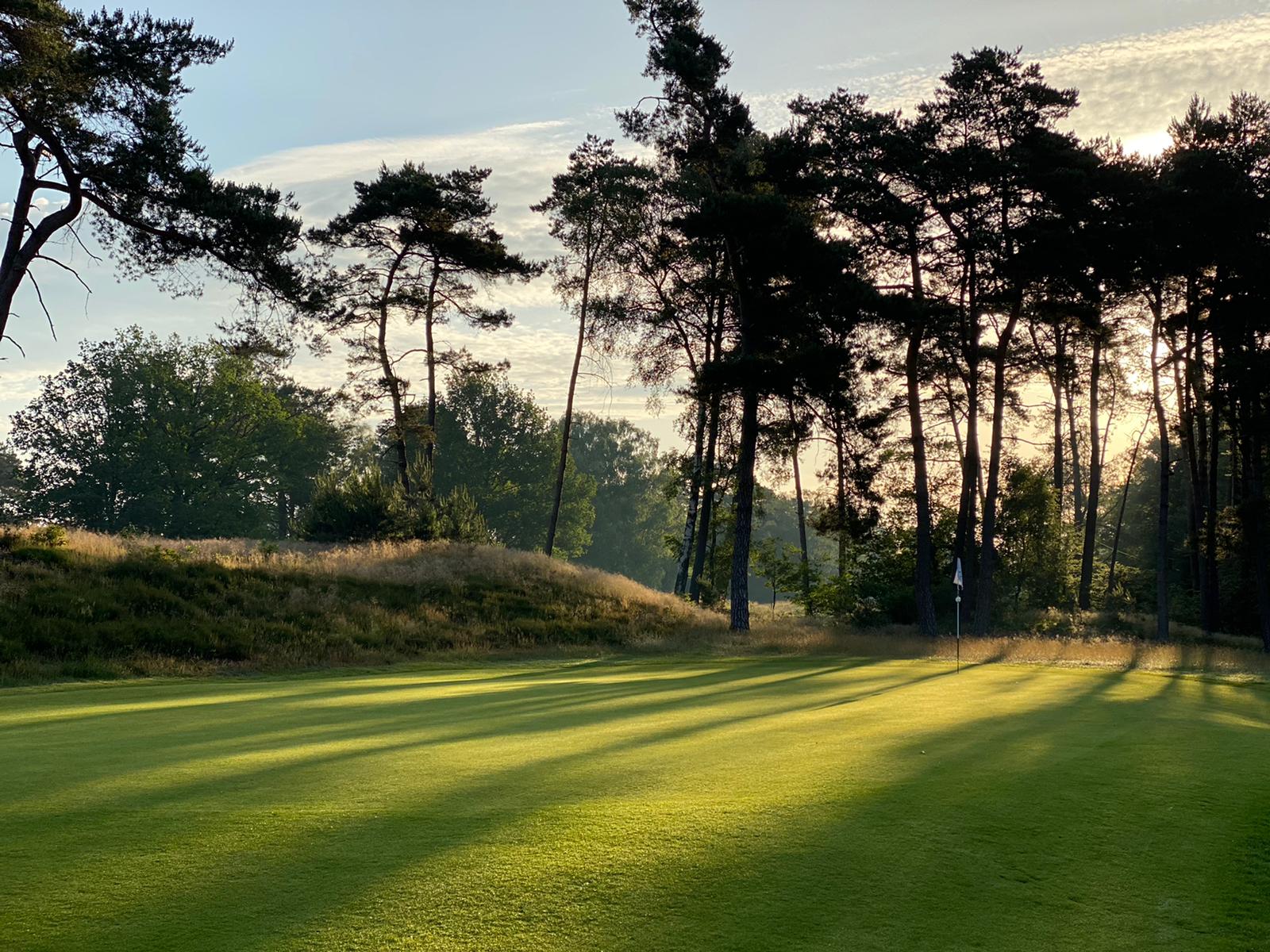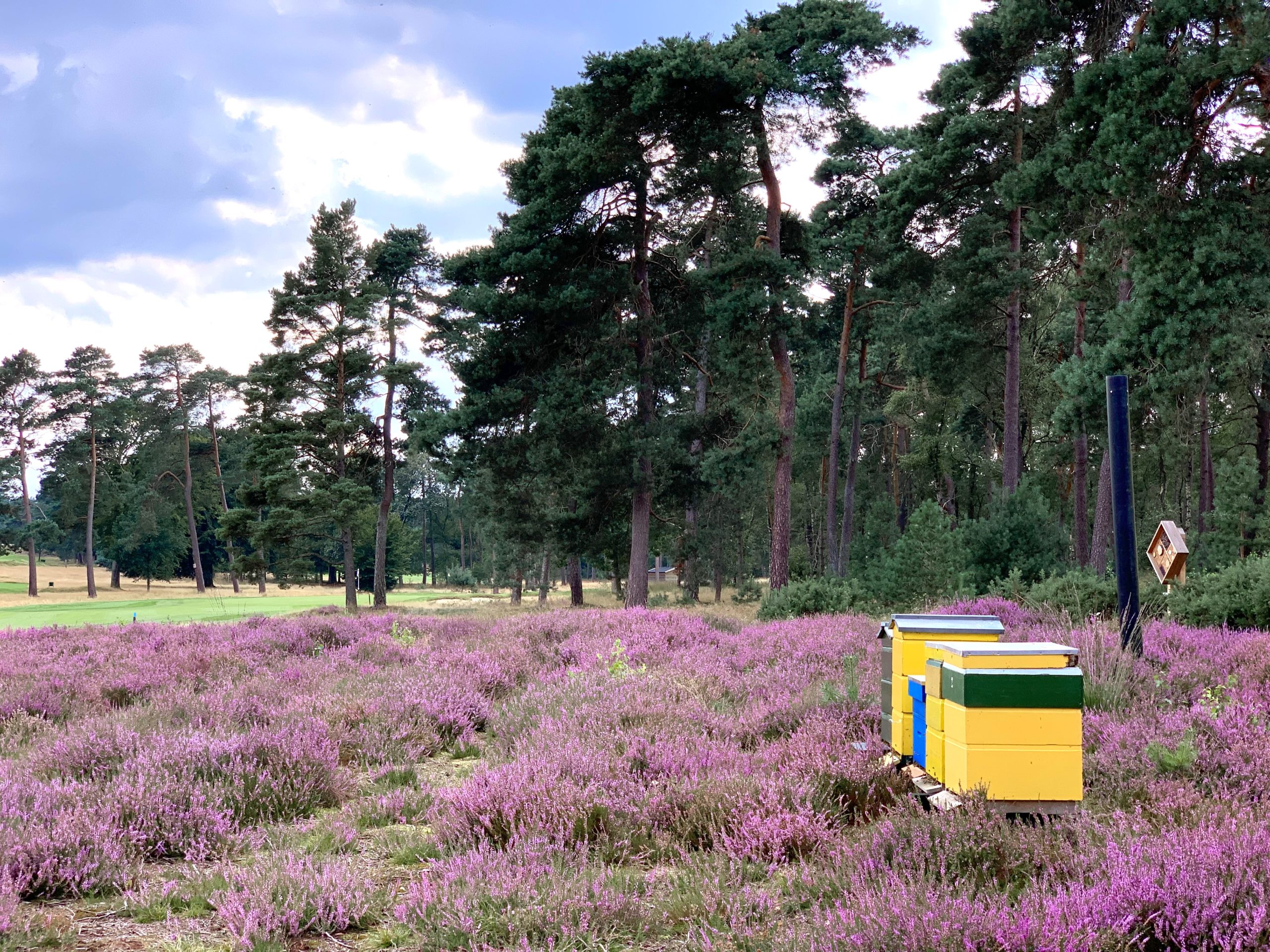
Flora and Fauna of the Rosendaelsche Golf Club
Jac. P. Thijsse once said, "Everything grows everywhere, provided the conditions are favorable." One could assume that there are no barriers for our winged friends; they can simply fly over them. Nevertheless, it also applies to them, that there must be optimal (food) conditions, if they want to settle in a certain area.
Birds
At the Rosendaelsche we take an annual inventory of the fauna. We count the number of occurring bird species, keep track of which breeding birds are using the nest boxes, and keep an eye on which other animal species populate our grounds. The number of bird species on the Rosendaelsche in recent years is estimated at 65. There are six different species of titmouse: great tit, blue tit, black tit, glossy head, crested tit and long-tailed tit. The great tit and blue tit make frequent use of our 60 nest boxes.
The carpenters among the birds are also well represented: the great and lesser spotted woodpecker, as well as the green woodpecker, can be heard almost daily. This also includes the nuthatch, which unlike the tree creeper can descend along a tree trunk with its head down. The nuthatch and the pied flycatcher also nest in our nest boxes. The pied flycatcher always sits on the nest box or on a branch on the lookout.
The larger singers are represented by the great thrush, the song thrush, the blackbird and the starling; but in winter the redwing and the fieldfare are also regularly seen. Of the finches, the chaffinch and the greenfinch are frequent, and the goldfinch is also present every year.
Our country's three smallest birds also populate our golf course: winter wren, goldcrest and fire goldcrest; but the latter two are more likely to be heard than seen. The white wagtail is always present in summer. Furthermore, in the summer months, especially at the 16th hole, we always find the tree pipit, tree lark and fitis, while the chiffchaff can also be heard. The birds of prey are especially well represented by the buzzard, but also hawk, sparrowhawk and kestrel sometimes show themselves.
Mammals
Of the mammals, we are, of course, most proud of our badgers, who inhabit a fine fortress near the 8th but do search for food at night over the course . In addition, roe deer, red and fallow deer, foxes and sometimes martens are frequent. Even the wolf is said to have visited.
Other species
The reptiles and amphibians are represented by the hazelworm, grass snake, sand lizard, heath frog and brown frog.
At least three species of bats also inhabit the Rosendaelsche: the most common being the (common and rough) dwarf bat, but also the late-bird bat, the big-eared bat and the ruddy bat are spotted.
Butterflies and dragonflies can also be found, of course, including the lesser firefly, the heather blue, various whites, sometimes the swallowtail and of course lots of moths. More research will be done on these in the coming years. Many other insects, such as different species of grasshoppers and crickets (blue-winged grasshopper), spiders, ants and even smaller insects populate course, often without our knowledge.
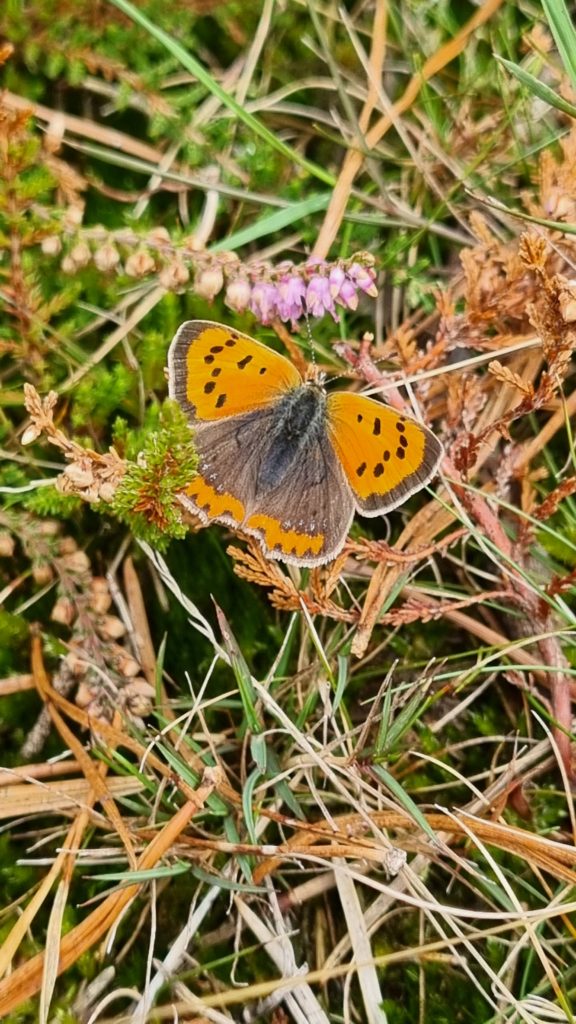
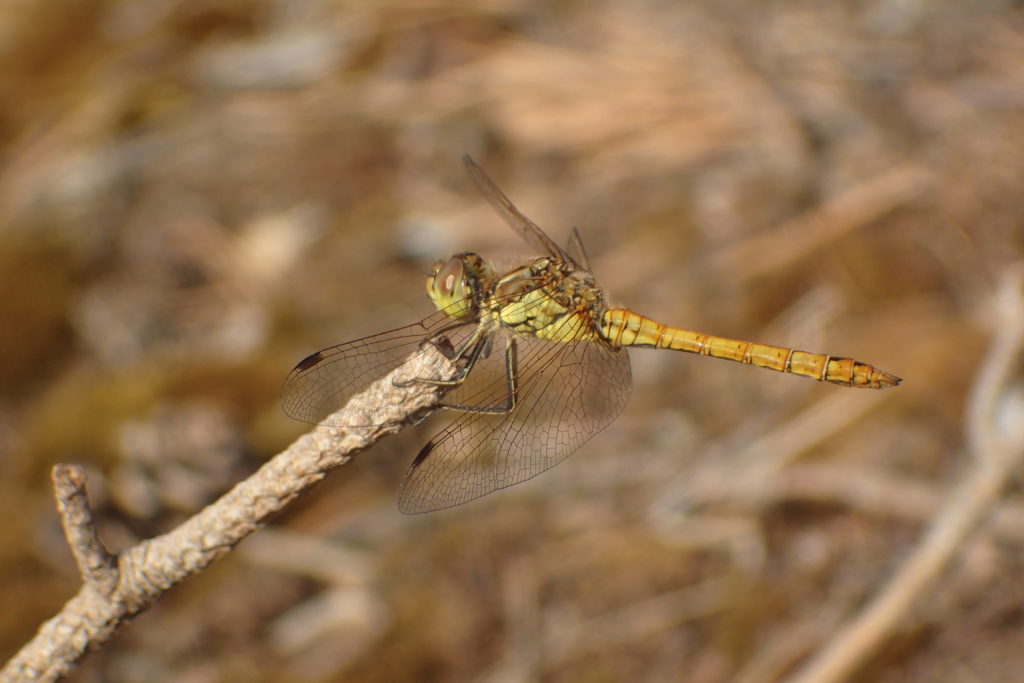
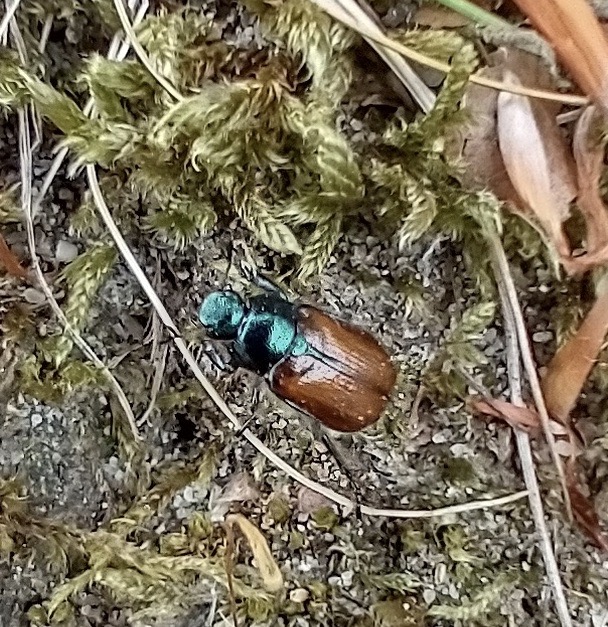
Flora
The typical dry Veluwe landscape also translates into the flora: largely cultivated and mixed forest, predominantly with Scots pine, but also birch, oak and beech, among which the bilberry and red or foxberry, bramble and various grasses grow. The still open places consist of heather (sporadically also heather), often supplanted by grasses such as bentwort, common ostrich grass and arrowstraw. The aim is to bring back the heathland, which used to be such a defining feature of course, wherever possible and useful.
A flora inventory last took place in 2018 by the firm NLadviseurs. Here, some rare and vulnerable species such as grassbell, gorse, dwarf feltwort, creeping broom and prickly broom were noted. Sporadic occurrence of the (fairly common) broad wasp orchid also occurs, as the only orchid species so far on the course.
Policy
The management of the natural parts of the site is based on the principles of anchoring and, if possible, increasing the diversity of the existing forest cover, maintaining the characteristic trees along the course and, in addition, strengthening open corridors between the holes, where heath has a chance again. The alternation between forest and open areas is not only visually attractive but also determines the biodiversity typical of the area, which connects well with the surrounding forest and heathland plots. In addition to so-called "ambassador species" of plants and animals, species we are proud of such as the badger and the broom species, there are also designated "dream species" that we would like to see back on the site. These include the viviparous lizard, the viper and smooth snake, various moorland butterflies and birds. It will remain a challenge, also given the proximity of highways and nitrogen deposition on the Veluwe.
